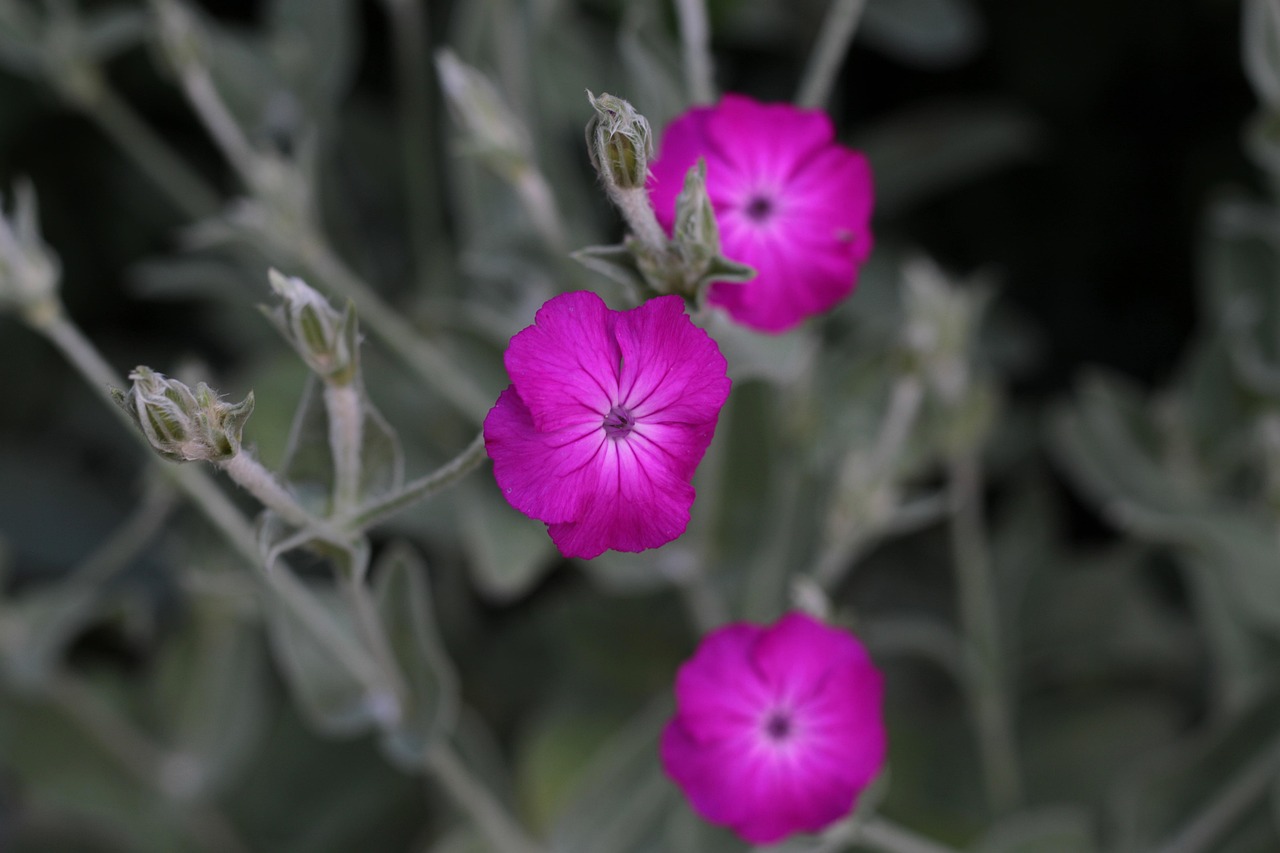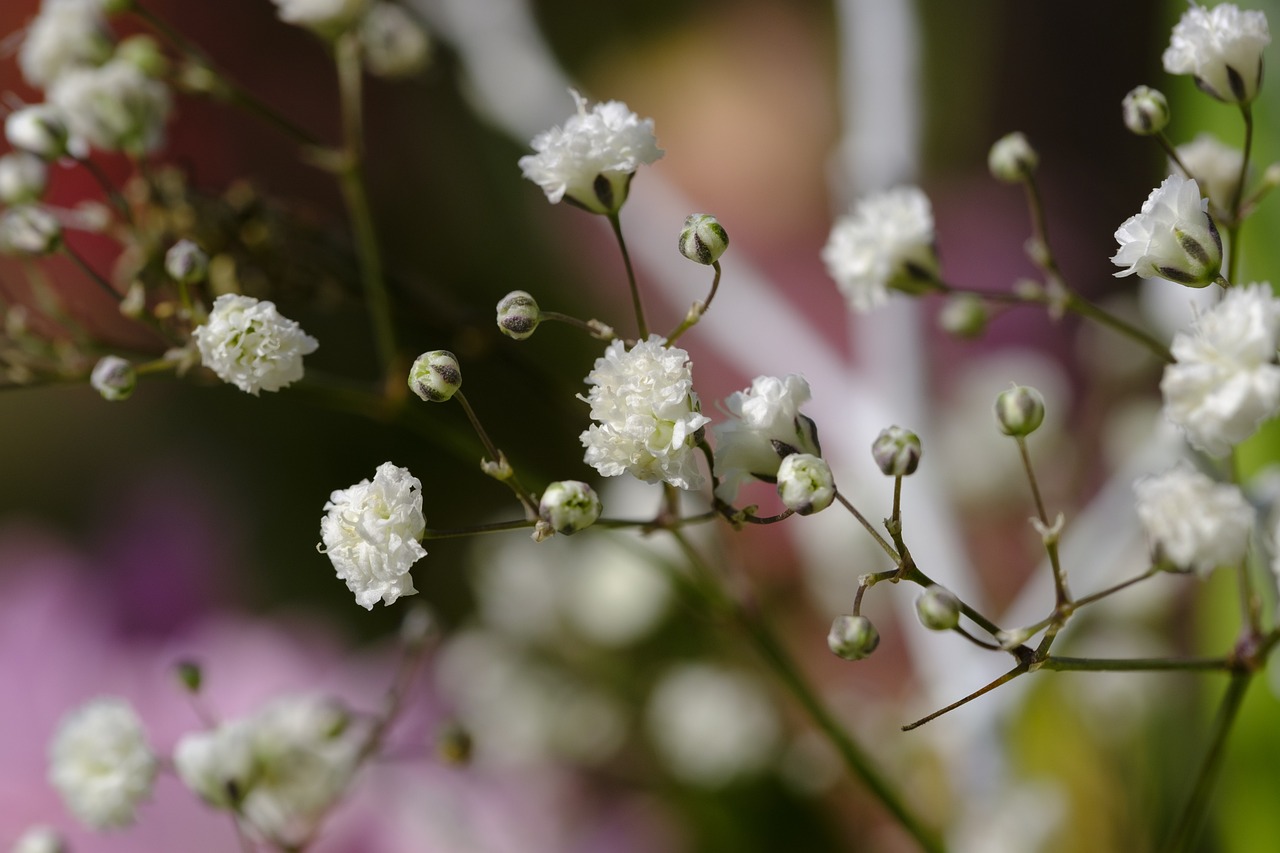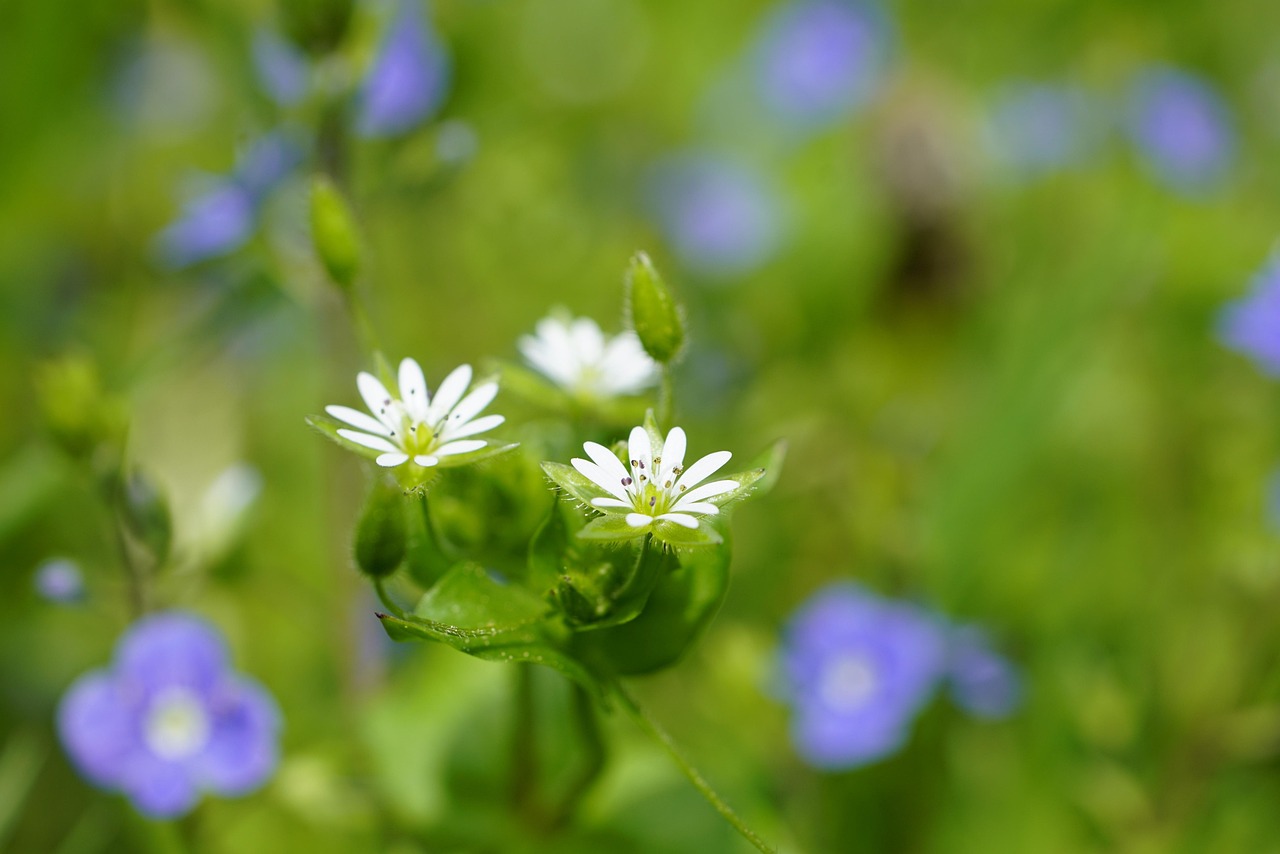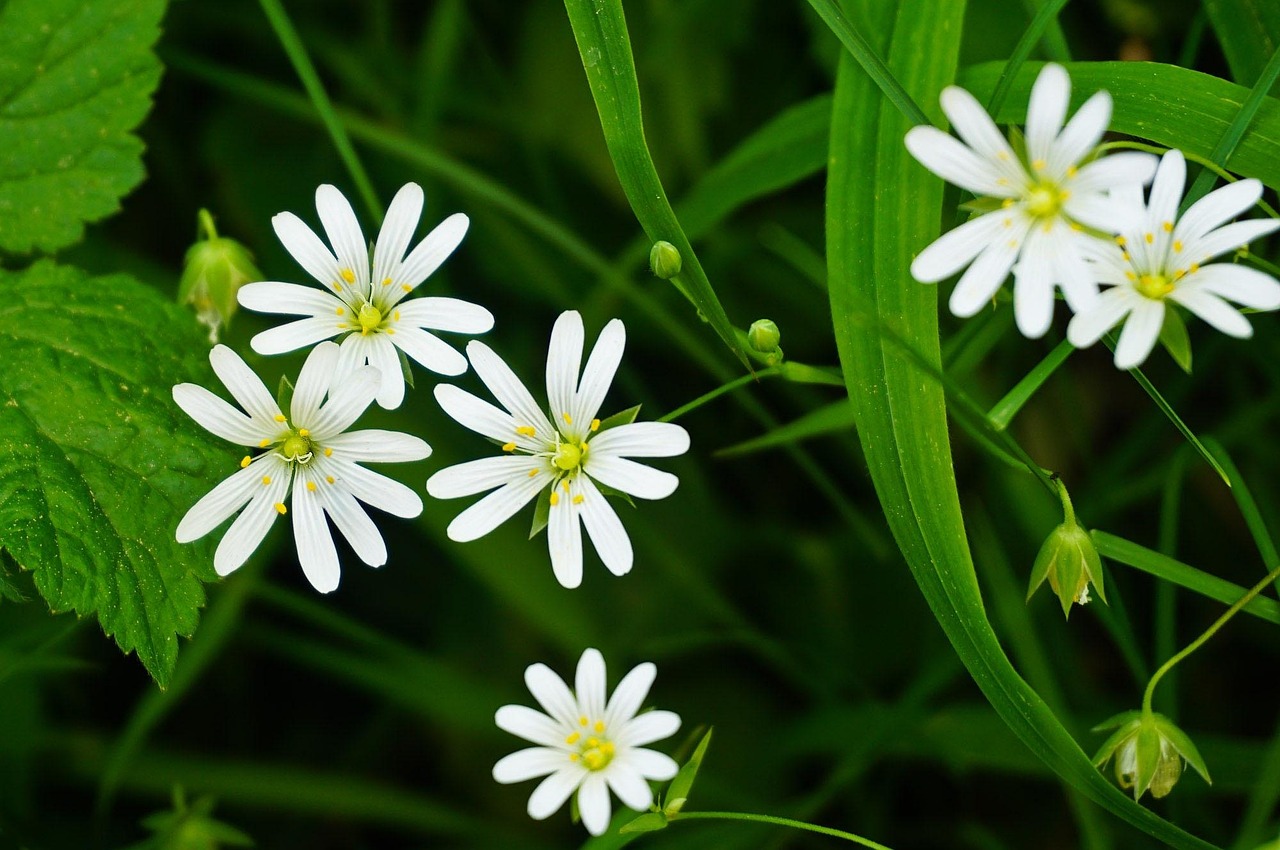Saponaria | A Plant Once Used as a Soap Substitute in Medieval Life
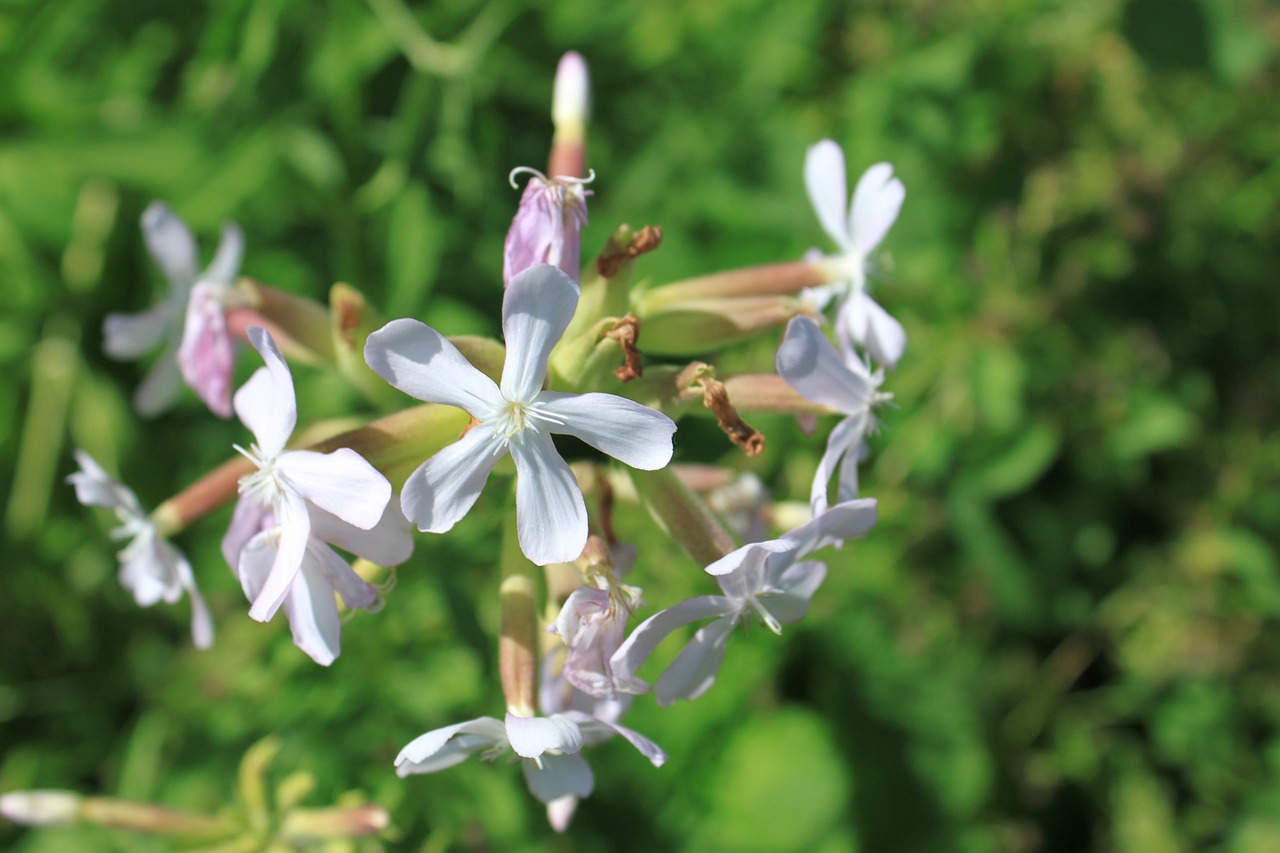
Saponaria, also known as soapwort, is a perennial or annual plant that produces delicate pink or white flowers. Its name comes from the foaming property of its leaves and stems when rubbed with water, and it has long been used as a natural substitute for soap.
This plant is popular as a border flower or in rock gardens, allowing me to easily enjoy its beautiful blossoms.
In this article, I will explain in detail the basic information about Saponaria, its cultural and historical background, and tips on how to grow it.
Basic Information
- Scientific name: Saponaria officinalis
- Family: Caryophyllaceae
- Origin: Europe and Western Asia
- Appearance: Saponaria grows to a height of about 30–60 cm, with clusters of small flowers blooming along slender stems. The flowers are mostly pale pink or white, and some release a faint fragrance in the evening. The leaves are oval and arranged opposite each other. Both stems and leaves are sturdy and highly resistant to drought.
- Flowering season: It blooms for a long period from June to September, adding color to the garden.
Cultural Significance Around the World
Because of its soap-like qualities, Saponaria has been widely used in households, especially in Europe.
In medieval Europe, it was used for washing clothes and hair, playing an important role in daily life.
In traditional English and French gardens, it was planted for its beauty and fragrance, and it is still appreciated today in rock gardens and natural-style gardens.
In Asia, Saponaria was valued for its simple beauty and practicality, often planted around temples and home gardens.
Historical Episodes
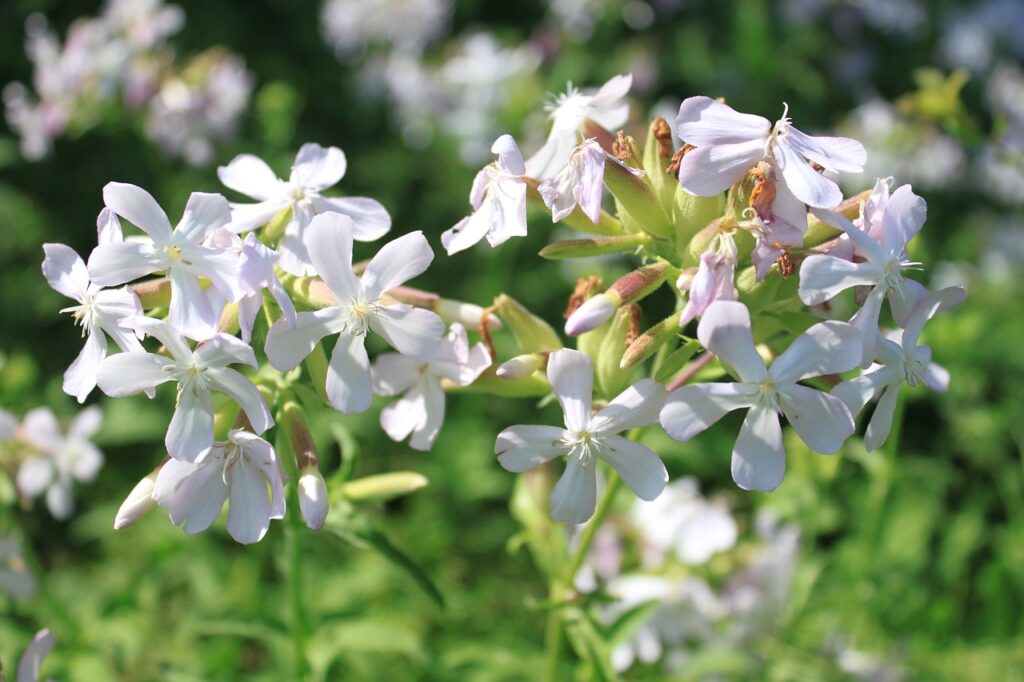
Saponaria has been known since ancient Greece and Rome, where its foaming property attracted particular attention.
Roman texts record its use in washing wool and during religious rituals.
In medieval Europe, it was prized as “washing herb” and cultivated in monastic gardens.
From the 18th century onward, it was improved as a horticultural plant, gaining ornamental value and becoming more widely cultivated.
Gardening Advice
Saponaria is hardy and easy to grow, making it suitable even for beginners. Here are some key points:
Sunlight
It prefers sunny spots but can also grow in partial shade. In areas with intense sunlight, providing some shade is beneficial.
Watering
Although resistant to moderate dryness, it should be watered thoroughly during the growing season when the soil becomes dry. Good drainage is essential to avoid overwatering.
Soil
It thrives in well-drained sandy soil and prefers neutral to alkaline conditions over acidic soil. Adding lime may improve growth.
Fertilizer
Apply slow-release fertilizer about once a month during the growing season. Over-fertilization may lead to excessive leaf growth and fewer flowers.
Pruning
Remove wilted flowers and stems regularly to encourage continuous blooming. After the season, trim the plant to ensure healthy growth the following year.
Wintering
It has strong cold resistance and generally requires no special protection. In extremely cold regions, mulching to protect the roots is recommended.
Conclusion
Saponaria is a charming plant that not only decorates the garden with its delicate flowers and resilience but also carries deep cultural and historical significance.
Because it is easy to grow, I recommend it to beginners, especially for use in rock gardens or as a border plant.
With its long blooming season and pleasant fragrance, it is a wonderful addition to any garden or container.


